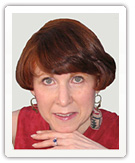e-Tips
Healing Generational Communication Disconnects
It’s obvious to just about everyone that we have been witnessing fundamental changes in communication media and styles, accelerating markedly in the last 15 years. Technology and the market have led the way to faster, more efficient, smaller, “always on” media. Communication styles have followed and adjusted, causing generational and occupational divides.
The challenge of working with the communications styles of the different generations comes up often in my programs and discussions. It’s important to recognize that it’s not just about technology. The medium is only part of the message. Don’t confuse “efficient” with “effective.
The tips below will help multi-generational communication to achieve desired results.
- Sometimes in-person is more effective (and secure) than exclusive use of electronic media, even if it takes longer.
- Generations X and Y need to be made more sensitive to privacy issues both professionally and personally - either privacy laws or what other generations or people consider to be private. Gen X and Y often consider this to be a “control” issue. It will be interesting to see how attitudes on privacy change over time as they already have with Boomers as they have aged and experienced the dangers.
- Some industries and fields have formalistic communication requirements, often for safety reasons (such as transportations industries) that must be followed precisely. Workers need to learn and follow them from day one.
- Knowing what to communicate is crucial. For example, Gen Yers may be lax about communicating schedule changes to managers and co-workers when they are coming into the office late, are sick, take days off, etc. That makes a long-lasting negative impression about responsibility.
- The younger generations need to be aware of perceptions about their “engagement.” The older generations tend to think people with earbuds in their ears are not engaged and listening adequately when they are talking to them. Many Gen Yers don’t realize that others, particularly other generations, see non-verbal meaning in behavior such as checking e-mail, etc. during meetings and not looking at a person who is talking to them because they are multi-tasking.
While it may reduce tensions for other generations to realize that this behavior is not intentionally rude, but rather is just young people acting on what they know (or don’t know), it still leaves the latter group ill-prepared for negotiations, interviewing, navigating the “political” dynamics of the workplace, or even their own job interviews. These have always been vital business skills.
Employers and managers need to be sensitive to teachable moments and to provide training early on in what we might term “holistic” communications skills and address disconnects such as these:
- Gen Xers say: Boomers over-explain. “Cut to the chase and get on with it.”
- Boomers think Millennials/Gen Yers tend to be blunt, abrupt and impersonal – “a texting culture.”
- Avoiding misinterpretation: Each generation must learn to use discretion as to which communication medium to use - – not just what’s most comfortable or fastest. We need to ask:
Don’t make assumptions that all recipients share your preferences for communication style. In this fast-paced world, it’s still important to think before hitting “Send” or picking up the phone or barging into a room.
What other communications issues do you find most problematic? Please send your thoughts on these observations to me at pwhaserot@pdcounsel.com or comment on the Cross-Generational Conversation group on LinkedIn.
Phyllis
© Phyllis Weiss Haserot, 2014. All rights reserved.
* The generational chronology for easy reference: Generations are defined by the similar formative influences – social, cultural, political, economic – that existed as the individuals of particular birth cohorts were growing up. Given that premise, the age breakdowns for each of the four generations currently in the workplace are approximately:
Traditionalists: born 1925-1942
Baby Boomers born 1943-1962
Generation X born 1963-1978
Generation Y/Millennials born 1979-1998
Struggling with how to achieve vital knowledge transfer among the generations? Ask about our workshop “Avoiding the Cliff: the Relationship Side of Succession Planning and Knowledge Transfer”
For coaching, training and special programs on inter-generational challenges for and among 4 generations in the workplace, attracting and retaining clients and employees of different generations, and maximizing the potential of young professionals and work teams, call or email Phyllis for an exploratory talk or complimentary coaching session at 212-593-1549 or pwhaserot@pdcounsel.com. Ask about our signature program *Frontrunner 5: 5 Things to Know About Each Generation.”
Contact us about participation in Cross-Generational Conversation Day.
Phyllis is available to speak at your organization or at firm retreats on inter-generational relations and organizational effectiveness topics. Call or e-mail for a list of topics or to custom-tailor your own.

